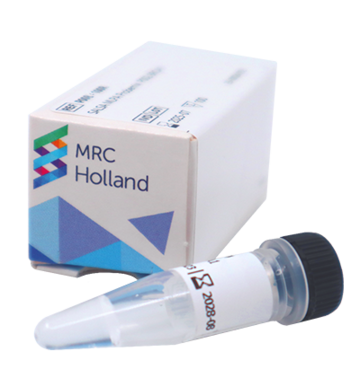P217 IGF1R

SALSA MLPA Probemix P217 IGF1R detects copy number variations in the IGF1R, IGFBP3, and IGFALS genes.

Contents: 45 MLPA probes, including 27 probes for IGF1R, 6 probes for IGFBP3, and 3 probes for IGFALS.

Tissue: human genomic DNA.

Application: research on prenatal and postnatal growth failure.

For research use only (RUO). Not for use in diagnostics.
